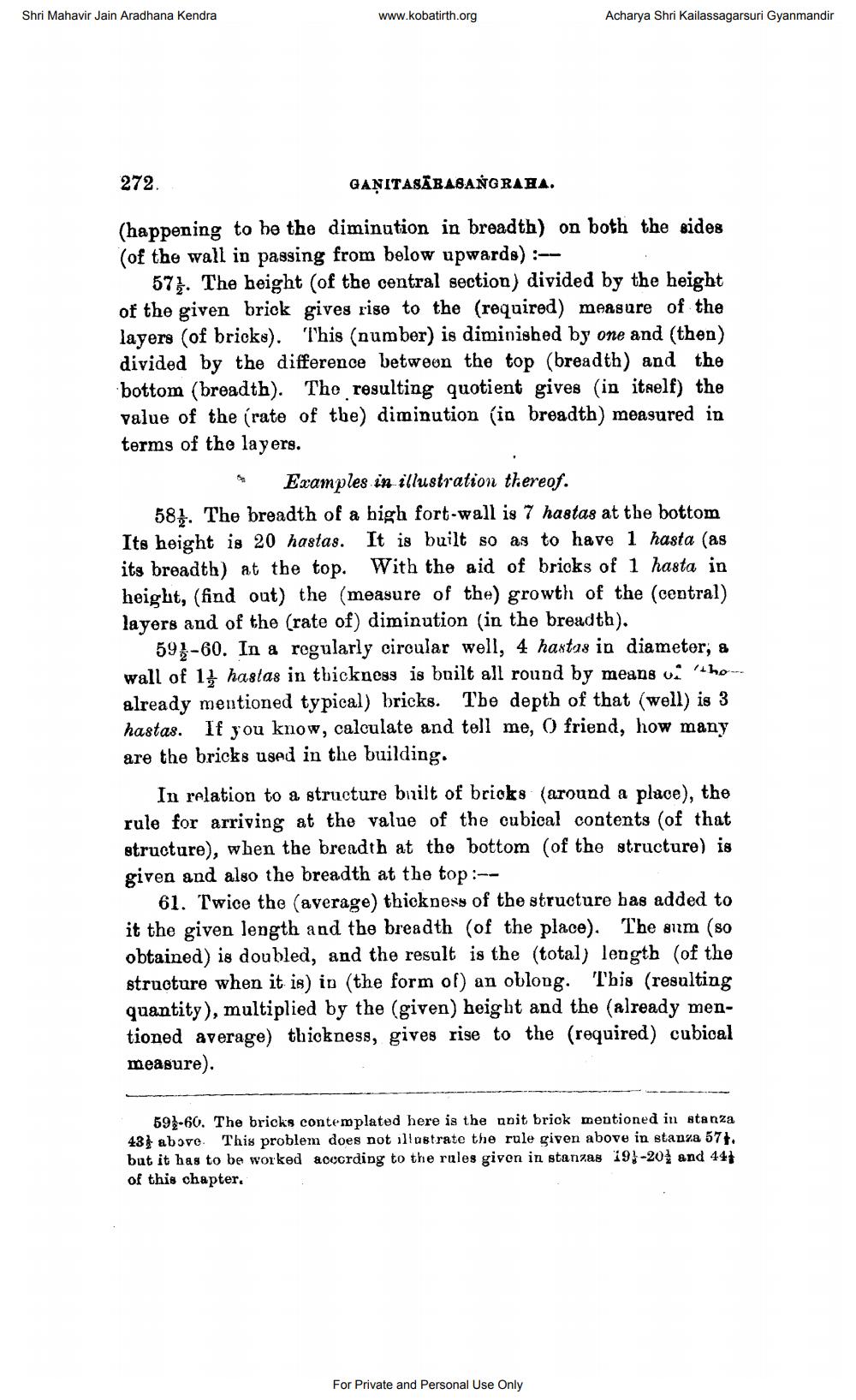________________
Shri Mahavir Jain Aradhana Kendra
www.kobatirth.org
Acharya Shri Kailassagarsuri Gyanmandir
272
GANITASĀBABANGRAHA.
(happening to be the diminution in breadth) on both the sides (of the wall in passing from below upwards) :--
57}. The height (of the central section) divided by the height of the given brick gives rise to the (required) measure of the layers (of bricks). This (number) is diminished by one and (then) divided by the difference between the top (breadth) and the bottom (breadth). The resulting quotient gives (in itself) the value of the (rate of the) diminution (in breadth) measured in terms of the layers.
Examples in illustration thereof. 581. The breadth of a high fort-wall is 7 hastas at the bottom Its height is 20 hastas. It is built so as to have 1 hasta (as its breadth) at the top. With the aid of bricks of 1 hasta in height, (find out) the (measure of the growth of the central) layers and of the (rate of) diminution (in the breadth).
591-60. In a regularly circular well, 4 hastas in diameter, & wall of 11 hastas in thickness is built all round by means or tho-- already mentioned typical) bricks. The depth of that (well) is 3 hastas. If you know, calculate and tell me, O friend, how many are the bricks used in the building.
In relation to a structure built of bricks (around a place), the rule for arriving at the value of the cubical contents (of that structure), when the breadth at the bottom (of the structure) is given and also the breadth at the top:--
61. Twice the average) thickness of the structure has added to it the given length and the breadth (of the place). The sum (so obtained) is doubled, and the result is the (total) length (of the structure when it is) ip (the form of) an oblong. This (resulting quantity), multiplied by the (given) height and the (already mentioned average) thickness, gives rise to the (required) cubical measure).
59-60. The bricks contemplated here is the unit brick mentioned in stanza 43} above. This problem does not illustrate the rule given above in stanza 571. but it has to be worked according to the rules given in stanzas 19-204 and 443 of this chapter
For Private and Personal Use Only




